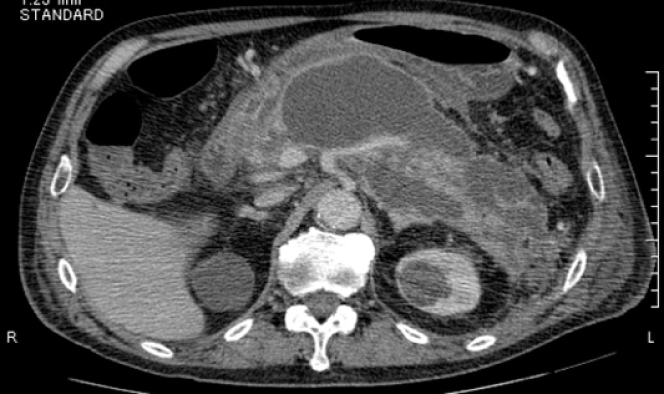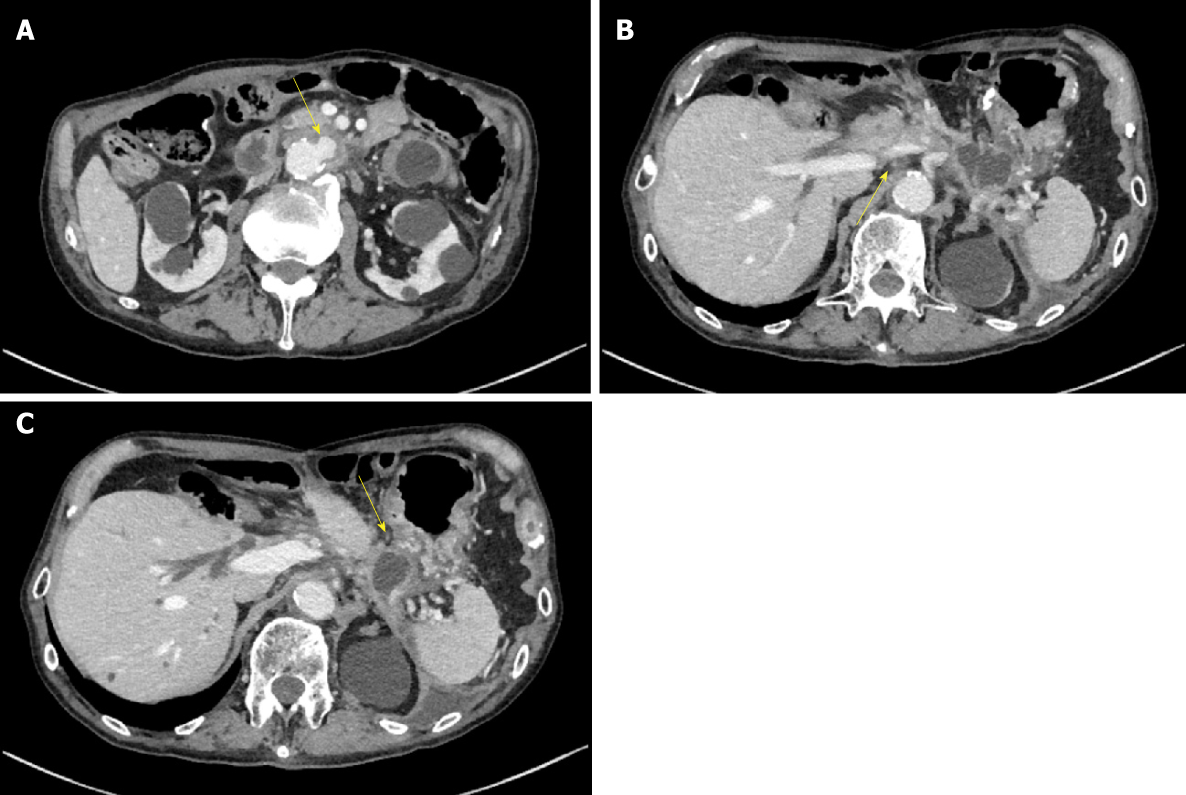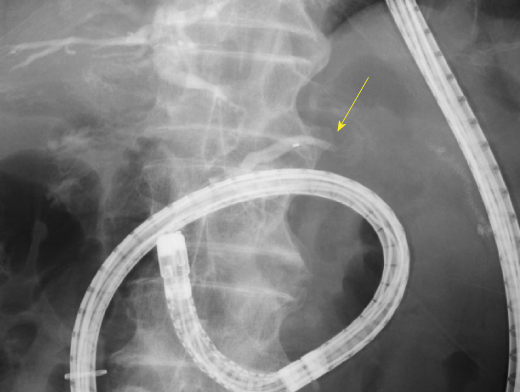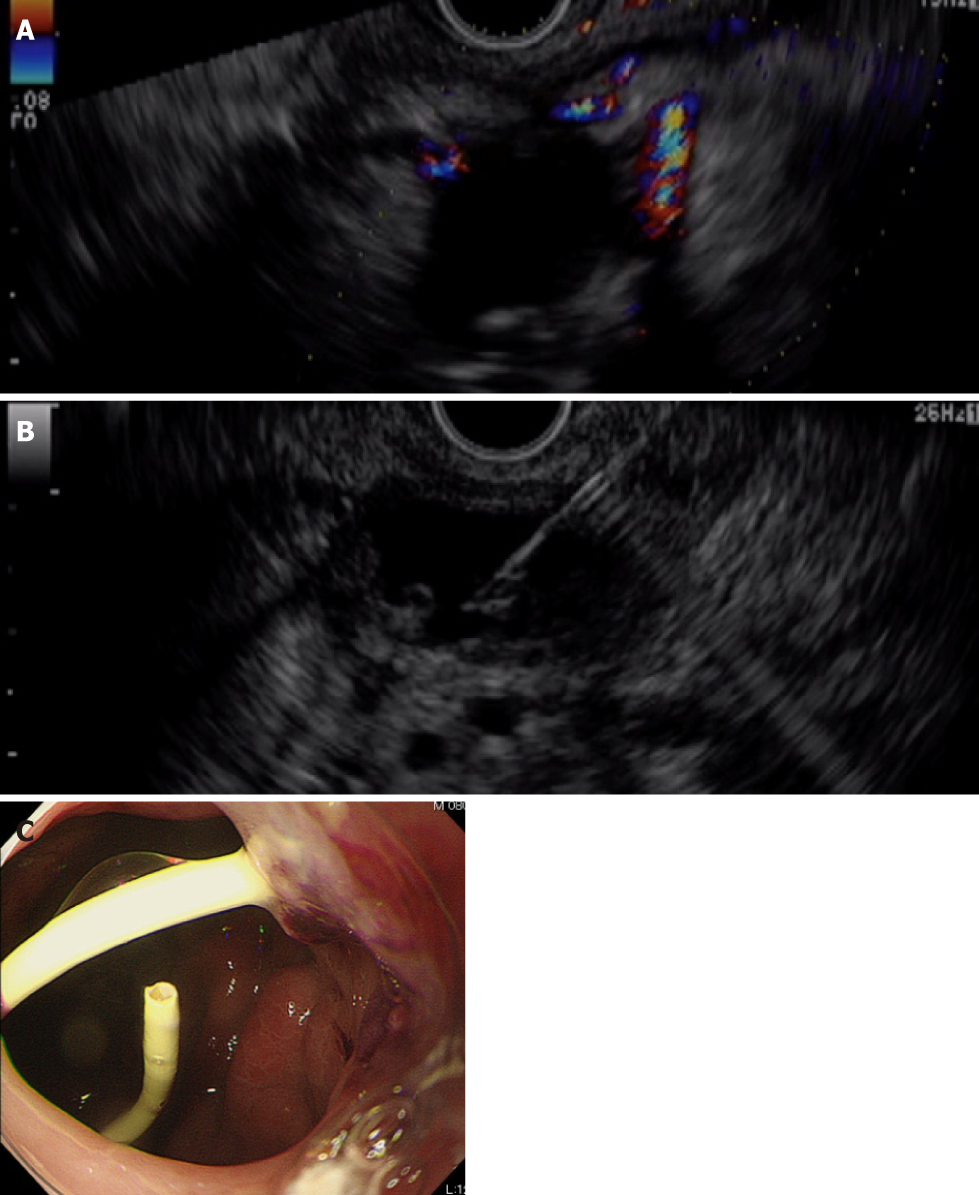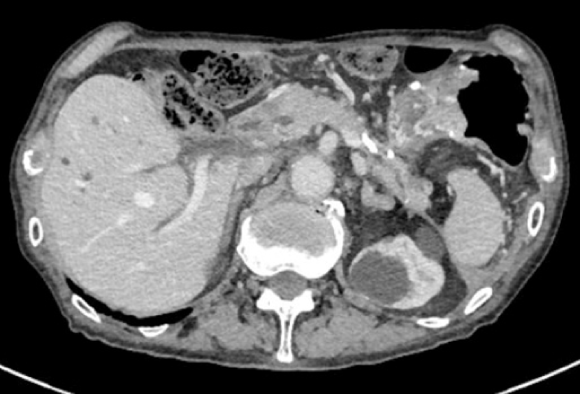Copyright
©The Author(s) 2019.
World J Clin Cases. May 6, 2019; 7(9): 1053-1059
Published online May 6, 2019. doi: 10.12998/wjcc.v7.i9.1053
Published online May 6, 2019. doi: 10.12998/wjcc.v7.i9.1053
Figure 1 Computed tomography image showing the development of walled-off necrosis in the pancreatic neck region when severe acute necrotizing pancreatitis occurred 7 years prior.
Figure 2 Computed tomography scan taken at 7 years after severe acute necrotizing pancreatitis.
A: Computed tomography (CT) scan showing spread of the pancreatic fluid collection to the aorta with surrounding inflammation and the appearance of ulcer-like blood flow in the aortic aneurysm thrombus (yellow arrow); B: The CT scan also shows splenic vein occlusion (yellow arrow; B) and venous dilation around the residual stomach; C: The shape of the pancreatic fluid collection is narrow around the stomach (yellow arrow), although it shows extensive spread.
Figure 3 Pancreatogram during a double-balloon endoscopic retrograde cholangiopancreatography shows complete pancreatic duct disruption (yellow arrow).
Figure 4 Endoscopic ultrasound-guided drainage.
A: A linear array echo-endoscope shows many vessels surrounding the pancreatic fluid collection and stomach; B, C: The pancreatic fluid collection is punctured using a 19-gauge needle, carefully avoiding the vessels (B), and a double pigtail catheter (6 French/4 cm) is inserted transmurally (C).
Figure 5 The inflammation further improved after the procedure.
- Citation: Yamada R, Umeda Y, Shiono Y, Okuse H, Kuroda N, Tsuboi J, Inoue H, Hamada Y, Tanaka K, Horiki N, Takei Y. Management of the late effects of disconnected pancreatic duct syndrome: A case report. World J Clin Cases 2019; 7(9): 1053-1059
- URL: https://www.wjgnet.com/2307-8960/full/v7/i9/1053.htm
- DOI: https://dx.doi.org/10.12998/wjcc.v7.i9.1053









